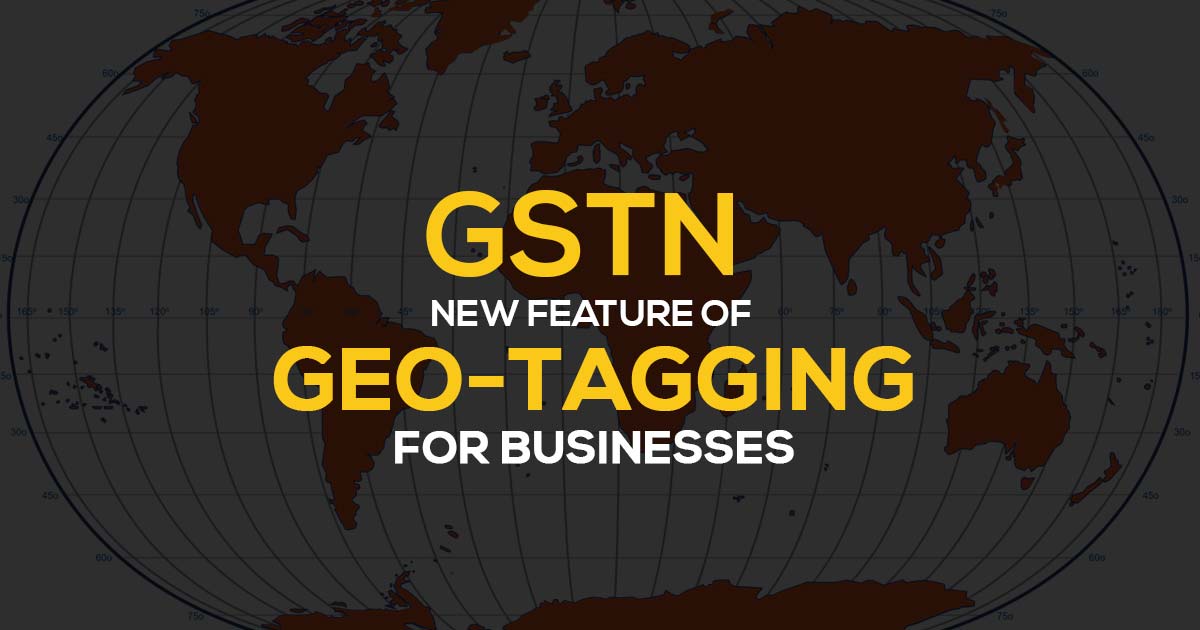
A new feature has been added to the GST Portal by the Goods and Services Tax Network (GSTN), which is the technological foundation of the GST system in India. With the use of a mapping tool, this function enables taxpayers to geocode their primary business address, which transforms the address into geographic coordinates (latitude and longitude).
The United States, the United Kingdom, Canada, and Brazil have all accepted the idea of geocoding for revenue purposes. But, the country and its tax rules, which are in effect in India, determine the extent to which geocoding is employed for tax purposes.
Read Also: Difference Explained: GST India vs GST in Other Countries
This feature’s goals are to speed up the address location and verification procedure and guarantee the accuracy of address information in GSTN records. This is significant because it allows for accurate calculation of the appropriate GST rates, place of supply regulations, and other compliance needs.
The GSTN contributes to the speed and accuracy of address verification by enabling taxpayers to geocode their primary place of business address.
The FO portal, which enables taxpayers to see and amend their geocoded addresses, has this option accessible. Taxpayers must navigate to the “Services/Registration” tab of the FO site in order to utilize this service. Once there, users will be able to see the automatically produced geocoded address that the system generated using the data that is readily available.
Then, the taxpayer has the choice of accepting this address or updating it to more accurately represent their circumstances. The system will, however, only display a blank area if the geocoded address supplied by the system is not accessible for a specific taxpayer, enabling the taxpayer to directly amend the geocoded address.
Recommended: GST Portal Notifies Changes Regarding Correct ITC Details in GSTR-3B
The new data will be saved separately under the “Primary Geocoded” page when the taxpayer accepts or updates their geocoded address on the FO portal. The taxpayer may examine all of their geocoded address information on this tab in one place.
The taxpayer would have to log in to the portal and go to their profile in order to access this data. They would choose the “Place of Business” tab when they got there, and then they would seek the “Principal Geocoded” header. The taxpayer would be able to access the revised geocoded address information that was previously saved under this category.
It’s important to remember that changing the geocoded address information on the FO portal won’t affect any current addresses connected to the taxpayer’s account. Instead, it only adds another piece of data that might be utilised for taxes, assisting in making sure the taxpayer’s location is accurately documented.
The geocoding link will vanish after a taxpayer has entered their geocoded address information on the FO site. This is due to the fact that the procedure is viewed as a one-time action. Also, taxpayers who have already geocoded their locations via a new registration or basic amendment process won’t be able to access the service.
Several sorts of taxpayers, including regular taxpayers, composition taxpayers, SEZ units, SEZ developers, Input Service Distributors (ISDs), and casual taxpayers, can presently use this service. All of these taxpayers may now use the geocoding feature and make any necessary updates to their geocoded address information.
Important: Supplies to SEZ Under GST: Rules and Provisions
Taxpayers who are presently active, cancelled, or suspended can also use this capability. The implementation of the geocoding feature will take place in stages, and as of right now, only taxpayers with addresses in Delhi and Haryana can use it. It is anticipated that within a year or two, the module would be fully operational and completely integrated into the GSTN.
For taxpayers, the addition of the geocoding feature to the GST Portal is a positive step forward. Geocoding, however, could not be as common or precise in poor nations and areas with weak technology infrastructure because of a lack of information or resources.
Nonetheless, via a number of digital projects, attempts are being undertaken in India to enhance geocoding skills in these areas. GEO coding is already applied by Corporate Laws in India, and sooner or later we may see both ministries exchanging seamless data. Geotagging is one example of a tax technology that is being digitalized to assure accuracy and transparency over time.